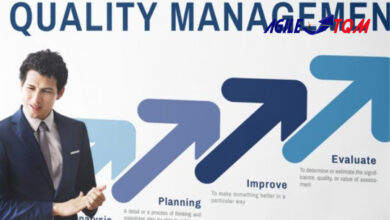TQM and Process improvement

Process management is one of core elements of TQM. In TQM, there are always ways in which a process can be improved to better meet the needs of the customer and that an organization should constantly strive to make those improvements. Within a TQM program, all employees participate in improving processes, products, services, and the culture in which they work (ASQ, 2017); This process improvement includes the following stages, (Adesola and Baines (2005), Rashid and Ahmed (2013)):
- Process selection: this step consists of identifying the process where improvements will be applied.
- Preparation for improvement: this step consists of a preparation phase to have the necessary requirement for a successful process improvement.
- Process analysis and redesign: this step consists of redesigning the process and defining areas of improvement.
- Implementation and improvement: last step consists of implementing the improvement to the process.
Adesola and Baines (2005) developed the integrated multidimensional process improvement methodology. Different methods like TQM, Six Sigma, Kaizen could be combined to apply the integrated multidimensional process improvement methodology. Specifically, this methodology has seven steps:
- Business needs understanding: develop vision and strategic objectives, perform competitor analysis, develop organisational model, evaluate current practices, prioritise objectives, scope change, establish measurable targets, develop process objectives and assess readiness, obtain approval and initial project resource, benchmark the process.
- Process understanding: identify the business process architecture scope and define the process, capture and model process information, model the process.
- Process modelling and analysing: verify and validate the model, measure the existing process performance, and analyse the business process.
- Process redesigning: benchmark the process, identify performance criteria for re-design process, identify focus of re-design activity, model and validate new process model identify IT requirements, and estimate performance of re-designed process
- New process implementation: plan the implementation, obtain implementation approval, review change management plan, communicate the change, technological development, make new process operational, train staff, roll-out changes
- New process and methodology assessment: conduct process deployment and performance data reflections, revise organisational approach.
- New process reviewing: develop strategic view of the business, set process targets and performance, develop a plan to meet targets, implement plans.
A generic model for business process improvement. Source: Adesola and Baines (2005).

TQM and process improvement have been discussed in many studies, (Saljoughian et al. (2014), Rashid and Ahmed (2013), Antony & Gupta (2019), Chan and Spedding (2003)). To start with, Saljoughian et al. (2014) investigated the relationship between TQM and Process improvement in a service company. According to the study, TQM factors lead to process improvement. Moreover, Rashid and Ahmed (2013) in their study analyzed the relationship between TQM and process improvement. They defined first the phase of process improvement within a TQM framework (process selection, preparation for improvement, process analysis and redesign, implementation, and improvement). TQM focuses on process, customer, and defect reduction. In the same study, the authors highlight strengths and weaknesses. TQM is able to improve service delivery, moderate potential cash savings. However, the weaknesses are the lack of a structured approach to improve the process, difficulty in measuring TQM outcomes.
- Lack of commitment and support from top management,
- Poor communication practices,
- Incompetent team,
- Inadequate training and learning,
- Faulty selection of process improvement methodology and its associated tools/techniques,
- Inappropriate rewards and recognition system/culture,
- Scope creepiness,
- Sub-optimal team size and composition,
- Inconsistent monitoring and control (lack of expert supervision),
- Resistance to change (partial cooperation by employees).

